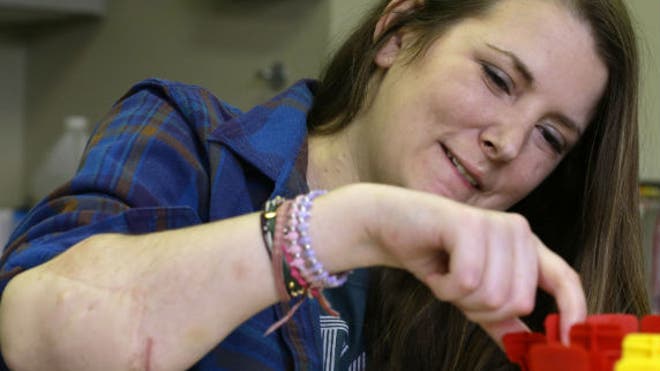
Follow this advice to enjoy a little holiday indulgence without sacrificing your health goals.
Indulging Without Overindulging
Relax. You won’t gain 10 pounds. It’s a misconception that you’ll need to go up a pant size in January. The average person gains only about a pound during the weeks between Thanksgiving and New Year’s. That’s no excuse to eat with abandon, though. (After all, gaining one pound every year can add up in the long run.)
But a study published in the Journal of Social and Clinical Psychology notes that people who had an attitude of forgiveness and self-compassion after one high-calorie setback were less likely to give up and keep bingeing. So if you lose control with a dish of chocolate truffles, don’t think, I’ve blown it. Might as well move on to the eggnog. Just forgive yourself for the truffles.
Don’t skip meals.
It seems logical: Forgo lunch; leave more room for pigs in blankets later. But arriving starved may result in overeating, and drinking on an empty stomach will give you a quicker buzz, which is more likely to lead to mindless munching. Eat normally during the day, and be strategic at the buffet. Don’t bother with things you don’t absolutely love. Splurge on something special (hint: It’s not those cubes of Cheddar), then stop.
Count your bites.
“A lot of appetizers are about 60 calories a bite,” said Karen Diaz, a registered dietitian in Wyckoff, New Jersey. Just five bites is around 300 calories. “That’s about half of what you might eat for dinner,” said Diaz. Keep a mental tab—or fill a small plate, once—so you don’t go overboard.
Turn down Aunt Jan’s pie.
“It’s better to sit with a little guilt than to overeat just to please loved ones,” Diaz said. If you can’t say no to Jan’s face, try “Maybe later,” then hope she forgets.
Give yourself a break from the gym.
According to a Gallup poll, the percentage of people who exercise regularly is lower in December than at any other time of the year. So don’t beat yourself up—you’re not the only one who’s too busy for Spinning class.
But try to stay active in other ways. Speed-walking with shopping bags counts. So does cleaning, said Mark Macdonald, the author of Body Confidence. Add some toning by tightening your core muscles as you vacuum or reach for scattered toys (imagine trying to get your belly button to touch your spine). And most important: Get back into your regular exercise routine once the holidays end.
Weigh yourself every day.
Or try on a pair of snug-fitting jeans to gauge those subtle ups and…OK, just ups. The point isn’t to get obsessive and berate yourself over every ounce gained; it’s to prevent yourself from completely letting go of good habits.
“Breaking the rhythm of healthy behaviors that you’ve built up is the real danger. You don’t want to have to start from scratch on January 1,” Macdonald said.
Drinking Responsibly
Practice moderation (really). Drinking too much may not just mean a terrible hangover. Around this time of year, doctors report seeing a spike in erratic heartbeats—dubbed “holiday heart syndrome.” It is more common among people who usually aren’t heavy drinkers but drink in excess for a short time.
“Alcohol may be toxic to enough cardiac cells that it disrupts the coordination required to maintain a normal heart rate,” said Kenneth Mukamal, an internist at Beth Israel Deaconess Medical Center, in Boston.
“Women should have no more than three drinks on any occasion and seven per week,” said Michael Weaver, an associate professor of internal medicine at Virginia Commonwealth University School of Medicine, in Richmond. “So a woman can have up to three drinks in a night and go out two nights, but that’s it for the week—or else the chances of problems go way up.”
Keep it on the rocks.
Melting ice dilutes a cocktail and creates more liquid. So order your drink on the rocks to try to avoid a quick buzz—and to sip longer before a refill. Use soda water as a mixer for liquor (a cocktail with liquor and club soda is only about 100 calories), and don’t be ashamed to add ice cubes to bubbly. In France, it’s called a piscine. Très chic.
Put a cork in it early.
Alcohol may help you to conk out quickly; the problem comes when it starts to wear off. The period in which your body is metabolizing the alcohol is when sleep is disrupted. You may wake up frequently in the middle of the night (even if you don’t remember doing so) and miss out on restorative rest. The best strategy is to allow time for the alcohol levels in your body to drop before going to sleep; at the very least, retire your flute several hours before bedtime.
Don’t let late nights make you fat.
“People who sleep less over time tend to be heavier,” said Lawrence Epstein, the chief medical officer of the Sleep Health Centers, in Brighton, Massachusetts. But it doesn’t take long for the cycle to start. “If you pull one all-nighter or miss a few hours each night over a week, your body releases hormones that prompt eating and weight gain,” Epstein said.
Use the weekend to catch up.
Most of us have sleep debt: the difference between the number of hours we need every night (which varies per person) and how many we get. If you feel best after seven hours a night and you get five for three nights in a row during a busy week, you have a sleep debt of six hours (two missing hours for three nights). Erasing that debt requires you to get six extra hours over the course of a few days, but they don’t have to be consecutive, Epstein said.
David F. Dinges, the chief of the division of sleep and chronobiology at the University of Pennsylvania School of Medicine, conducted a study in which participants were restricted to about four hours of sleep for five consecutive nights, then allowed to sleep for 10 hours or more on the sixth night. The researchers found that after the recovery night, participants regained some of their previous levels of alertness and ability to concentrate.
So while you should focus on eliminating your sleep debt completely, just one good snooze (a few hours more than you normally need) can give you a fresher start.
Watch out for hidden caffeine.
Think hot cocoa is a soothing way to end a winter’s night? Hold on to your marshmallows. Chocolate, even the powdered kind, contains caffeine, as do many over-the-counter pain medicines that you might pop at night to get a head start on a hangover. Excedrin Extra-Strength Caplets, for example, contain 65 milligrams of caffeine; by comparison, the average cup of coffee contains 50 to 100.
Skip the sliders.
Foods that are high in fat or protein require your body to work harder at digestion. When your body is busy breaking down mini hamburgers, your sleep is more likely to be hampered. Watch the clock; an early cocktail party is the perfect time to snack on something more substantial. As the night wears on, taper off. Or, if you’re still hungry, have some complex carbohydrates, like whole-wheat crackers or a handful of crudités.
Don’t assume that this is the most depressing time of the year.
Contrary to popular belief, depression isn’t more common during the holidays. In fact, suicide rates in the United States are actually lowest in December, according to the Centers for Disease Control and Prevention.
“This may be a result of more social interaction, which has been found to enhance happiness,” said Caroline Adams Miller, the author of Creating Your Best Life. But that doesn’t mean that you’re immune to the holiday blues, especially when you’re missing a family member or stressed-out by the in-laws. Make plans with friends if your family is far away—or, on the flip side, opt out of events if your schedule is overwhelming.
“You don’t have to be a type E personality—everything to everyone,” said Ronald Nathan, a psychologist in Albany.
Consider a supplement.
Is there a magic pill that will cure the blues? Of course not. But some research shows that omega-3 fatty acids may relieve depression; other research has found that vitamin D may improve mood. Add a daily supplement of omega-3 or vitamin D to your diet. Or increase your intake of vitamin D–fortified milk or foods rich in omega-3s, such as fish, flaxseed, and walnuts.
Take Facebook with a grain of salt.
You’ve seen the status updates: “Hope Santa can find us in ARUBA!” or “Mmm, homemade cider, kids making cookies, life is good.” And you know what? Those people have bad days, too. Remember: Most people put their best self forward on Facebook and Twitter. Don’t compare your life with those dreamy-sounding posts.
Make plans for January.
“If you have social events coming up with people you like, you’ll be upbeat about what’s to come,” said Alison Ratner, a clinical social worker in Atlanta. Plan a weekend getaway or an Oscar-nominated–movie marathon. Or, ahem, if you did gain that holiday pound, might we suggest a jogging club?
Source: fox news












